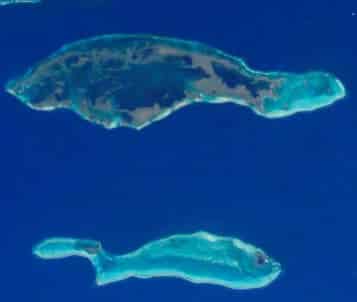Selecting the very best snorkeling in the Caribbean is not such an easy task, for the Caribbean Sea spans thousands of square miles of ocean and contains many beautiful islands ringed by coral reefs.
Our selections for the best places to visit in order to explore the region’s coral reefs were made using the following main criteria, all of which must be “good to outstanding” for a destination to be included in our list:
Quality and accessibility of coral reef snorkeling sites: The condition (i.e., “health”) of the coral reefs, average underwater visibility, water quality, and diversity of shallow sites readily accessible from shore or by a short boat trip.
Diversity of reef life: The number of fish, coral, and other invertebrate species you are likely to see while snorkeling at this destination.
Active coral reef ecosystem management: The referred destination has designated reasonably sized portions of its coral reef ecosystem(s) and adjacent waters as Marine Protected Areas (MPAs), and requires / enforces environmentally responsible snorkeling and diving practices
Ready accessibility by international visitors: Access available from most major airports with no more than 2 changeover flights
Acceptable accommodations and local transportation available at reasonable cost: Variety of accommodation / local transportation options available at equivalent rates to other towns/cities in the general area
Additionally, we consider the degree of use of the coral reef resources at potential snorkeling destinations in making our selections.
Why? The answer is really quite simple: the less visited a reef area is (in terms of number of divers or snorkelers/year), the better the health of the reef system and the more natural the behavior of reef life.
The most popular and heavily visited Caribbean diving destinations were originally targeted for tourism development long ago because they were recognized as “the best of the best”. But that was 20-30 years ago, and today these beautiful reef systems (despite efforts to manage them), have invariably been over-exploited by local tourism interests and moderately to severely degraded through overuse.
The Florida Keys is probably the best concrete example of this problem. Since the early 1970s the coral reefs of the Keys have lost over 90% of their live coral cover.
The reefs at the very best snorkeling sites in the Keys (Key Largo Dry Rocks and Looe Key) are now in very poor shape, due in large part to the lack of regulation of diving pressure.
As countless boat loads of snorkelers and divers continue to assail these reefs each year, the waters have become increasingly clouded by fine sedeiments regularly stirred up and deposited upon the corals by innumerable fin-kicks, most of the live coral is dead, and the fish assemblages have undergone substantial changes in both the numbers and types of species seen as well as their behavior (due to the popularity of divers chasing and feeding them).
As a general rule, the more advertising you see for a particular coral reef destination the more likely the reefs there have been subjected to heavy use.
For all these reasons, you may well notice that the “best snorkeling in the Caribbean” destination selections presented below differ from most other such recommendations you are likely to find online.

